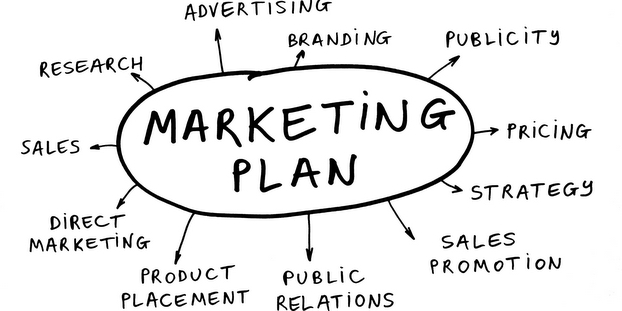
There’s nothing hazy about the growing popularity of non-alcoholic (NA) beverages. According to NielsenIQ, sales of non-alcoholic beer, wine, and spirits reached around $565 million in 2023 (a 35% increase from 2022). This demand for NA beverages won’t be souring anytime soon—NA beverage brand Athletic Brewing Co. saw its valuation nearly double this year, and AB InBev’s new NA beer Corona Cero will be the official global beer sponsor of the Olympic Games until 2028.
And if you find yourself sober curious or just want to drink a little less during the week, you’re not alone. A recent Gallup poll found that over the past twenty years, the percentage of regular alcohol drinkers dipped from 67% to 61% among young adults aged 18 to 34. Gallup also found that within the same age group, those who say they have an occasional alcoholic drink has fallen from 72% to 62%. There’s no denying the data—with younger generations drinking less, demand for NA beverages will likely rise as sober lifestyles continue to rise in popularity.
With the industry still in its brewing stages, there’s a huge opportunity to tap into the NA beverage landscape. Especially when you consider that as more brewers enter the NA beverage category, it’s only going to become more saturated with up and coming brands. That’s why it’s important to know how to competitively promote and market in a relatively young but hopping industry. So whether you’re a brand new NA brand, are interested in starting one, want to add an NA product to your offerings, or are simply exploring the option, it’s important to know what will separate your NA beverage from the rest of the pack.
What does successful non-alcoholic branding look like?
To find successful NA branding, you don’t have to look far. Athletic Brewing is currently writing the book on what a standout NA brand campaign looks like. While credited as one of the first movers in the space, being early isn’t the only factor contributing to Athletic Brewing’s breakout success. During Dry January this year, Athletic Brewing came out with its “Give Dry a Try” campaign, encouraging consumers to adopt more mindful drinking habits and try the company’s non-alcoholic beverage options. Part of Athletic Brewing’s campaign was the launch of its Track Record app, which counts down the days since the user’s last drink.
In addition to the Track Record app, the campaign also included giveaways and tips from experts on reducing alcohol consumption. Athletic Brewing also promotes to athletes that its drinks are a way to have fun with friends without jeopardizing their health or careers.
Through its “Give Dry a Try” campaign, Athletic Brewing became more than a company selling NA beer. This campaign gave Athletic Brewing a larger cause to stand behind, which was helping others develop healthy and responsible drinking habits.
Another, yet differing example of a company in the NA space that takes its branding to the next level is Liquid Death. Rather than boxing itself in, Liquid Death leverages PR and marketing campaigns that highlight the brand’s unique, playful energy to multiple customer segments, ensuring the brand checks a box for everyone—regardless of the reason. For example, Liquid Death’s “Pure Sugar Campaign” points to how the company’s products have less sugar and are generally healthier than other beverage alternatives like iced tea and soda. The company also speaks to its health benefits over alcohol and energy drinks. It helps that the brand is now the water of choice for hundreds of Live Nation concert venues, making Liquid Death an easily available alternative to drinking at most live music events. In essence, Liquid Death promotes itself as an NA brand by not being just an NA brand, and the success from this tactic shows—the company landed a $1.4 billion valuation this year.
That’s great for companies with plenty of resources, but how can a small or mid-sized company with a lower budget effectively promote NA beverages?
You don’t need endless resources to successfully promote a brand. While apps and topline marketing production may be out of your budget, out of the box thinking—a pillar of great PR—and some elbow grease can get you similar exposure for a fraction of the cost. Afterall, you can launch a great digital campaign by effectively leveraging social media. Far more important than ad dollars are authenticity, creativity, and specificity.
You can find examples of successful creative marketing by looking at emerging, niche brands going viral organically. For instance, while not in the NA beverage category, the band Never Ending Fall (NEF) got creative and launched a massively successful campaign just using what it had on hand. The band launched an entertaining taste-testing series—called “Can It Kirkland?”—which only cost as much as the beverages featured on the show yet generated fantastic exposure for a once lesser-known indie rock band. Notably, NEF succeeded by tapping into a campaign that circumvented what you might expect from promotional content for a band—in doing so, it went in a unique, creative direction and found new fans in the process.
The lesson here isn’t to try to recreate what NEF or any other successful brand has done, but to lean into creativity, go beyond traditional marketing expectations, and think outside of the box in a way that makes sense for your brand.
The growing NA market presents a frothing opportunity for beverage brands. Don’t let the newness or lack of familiarity of the industry scare you away from a swiftly growing category. Entering a new market can be intimidating, but it doesn’t have to be. It also doesn’t have to be costly. With the right tactics in place, you can make sure your NA beverage brand campaign doesn’t land at the bottom of the barrel and is given life to ferment into a next level PR and marketing strategy.
Eric Yaverbaum, CEO of Ericho Communications, is a 43-year public relations veteran and communications expert currently working on the third edition of his industry-standard bestseller Public Relations for Dummies and is also the bestselling author of seven other books including Leadership Secrets of the World’s Most Successful CEOs. He is a regular TV pundit, and his expert commentary has been featured in Forbes, Entrepreneur, The Washington Post, The New York Times, HuffPost, CNBC, and PR Week, among others.





Leave a Reply
You must be logged in to post a comment.